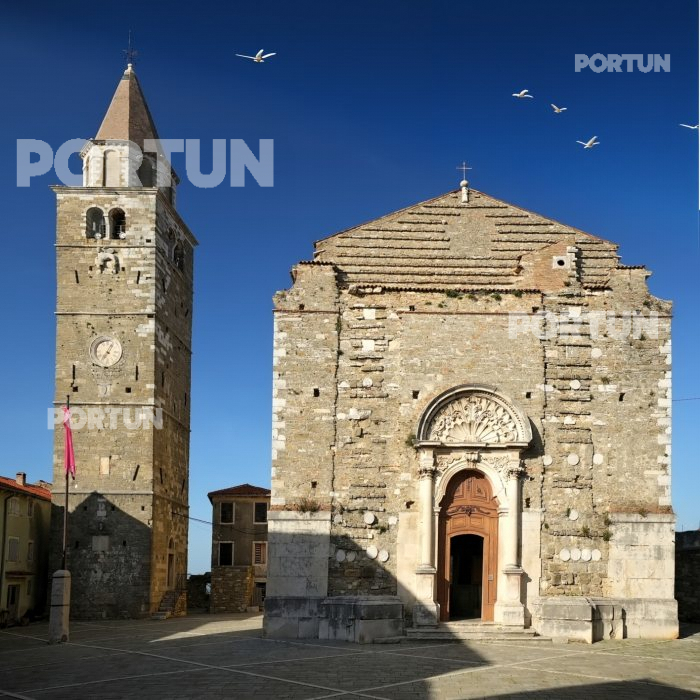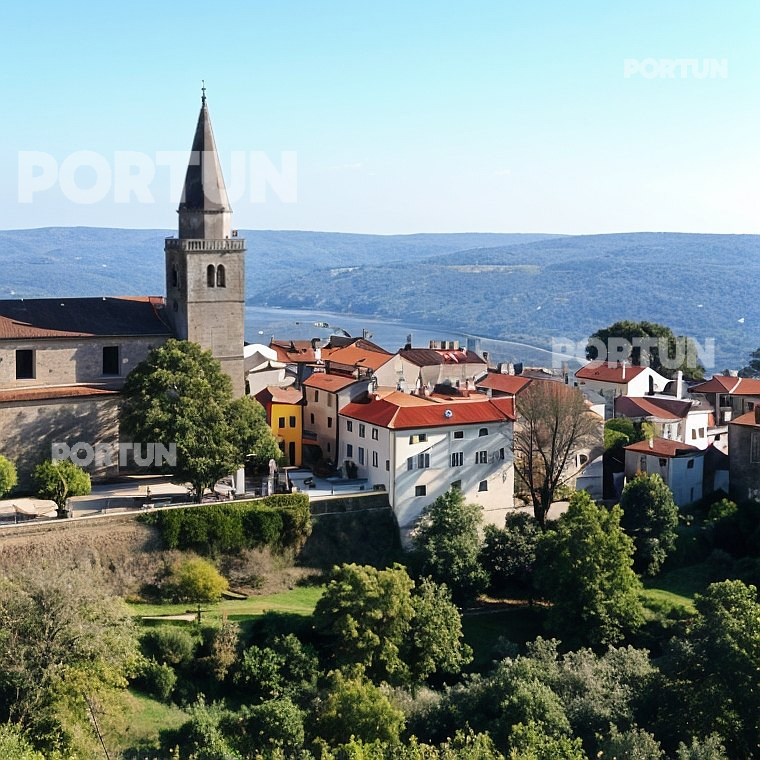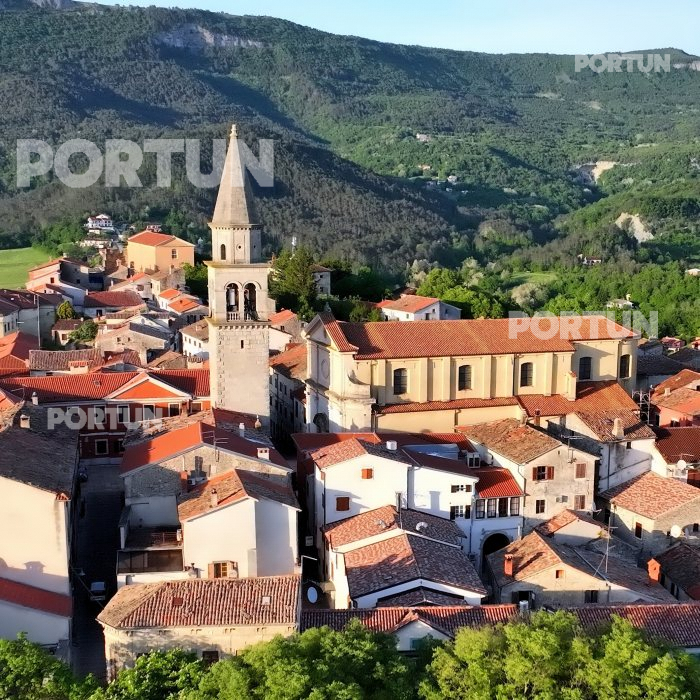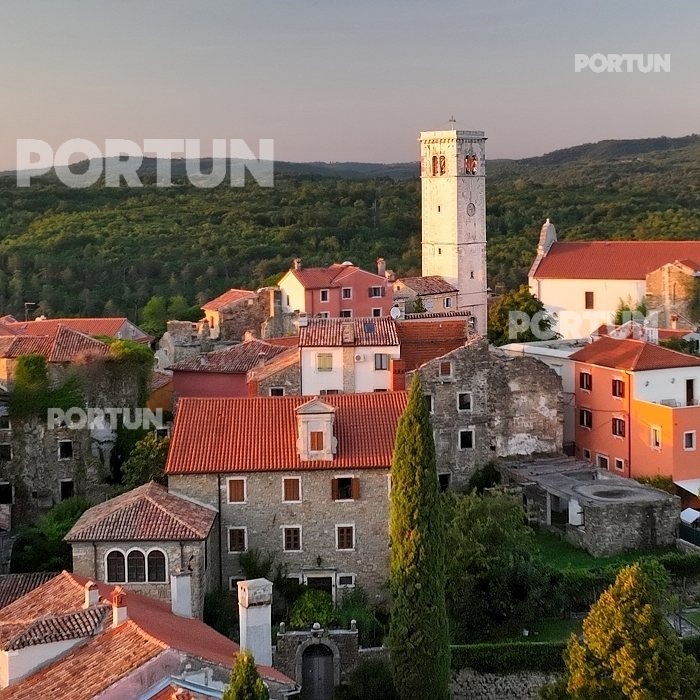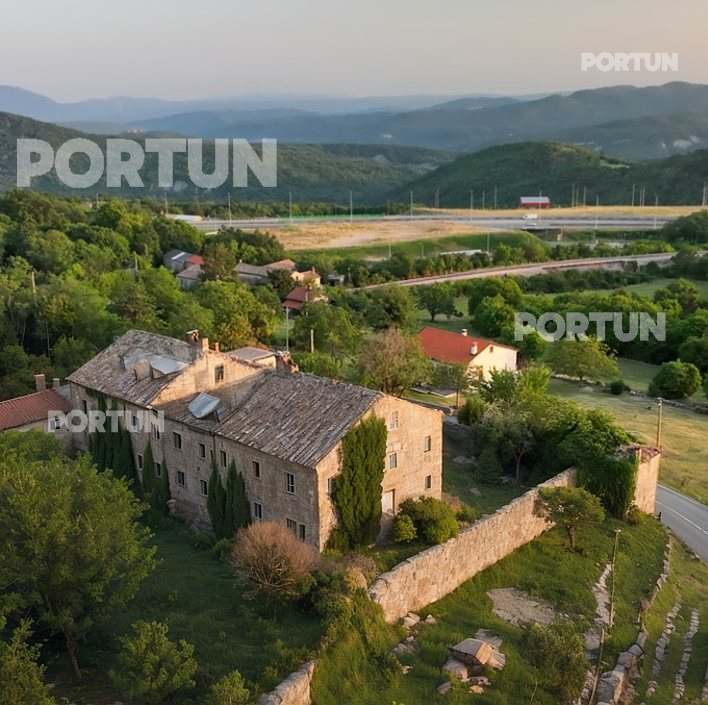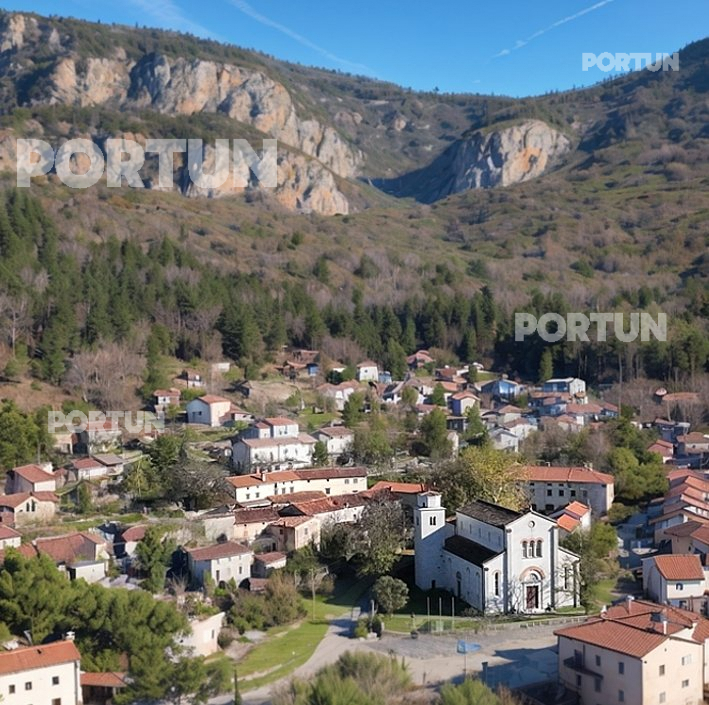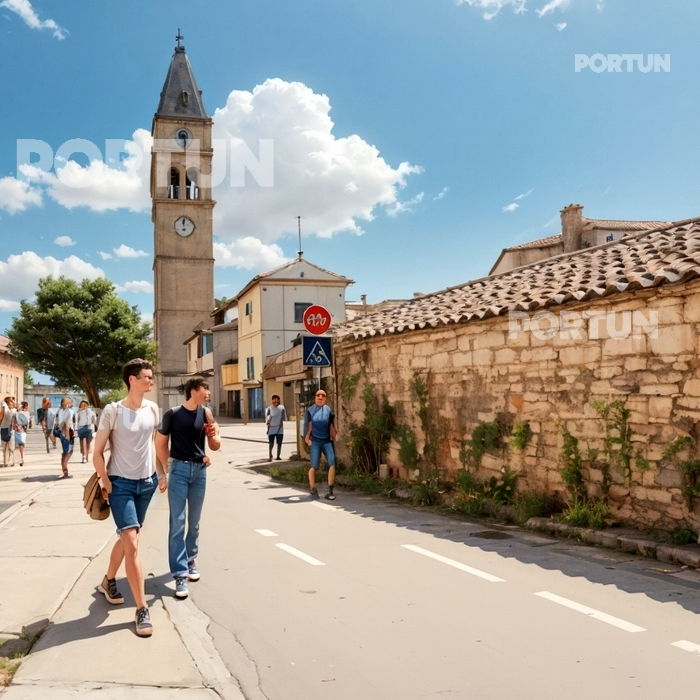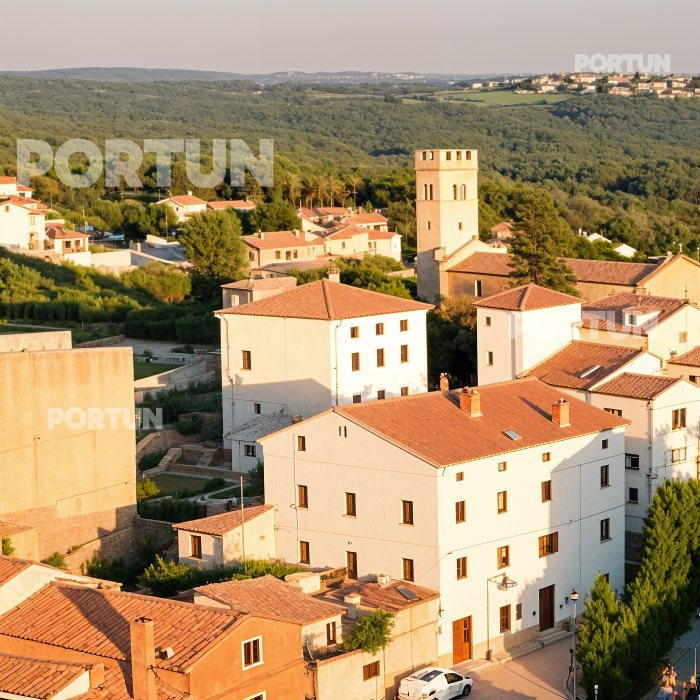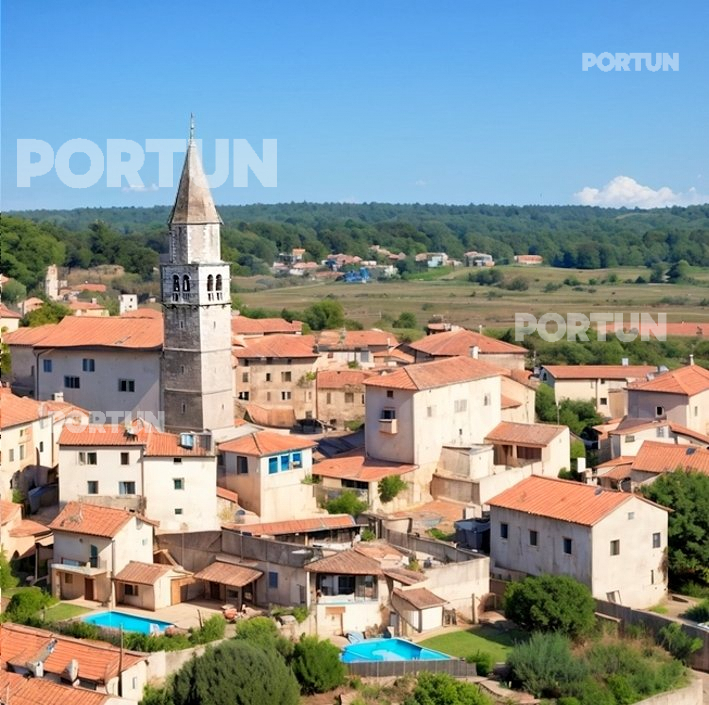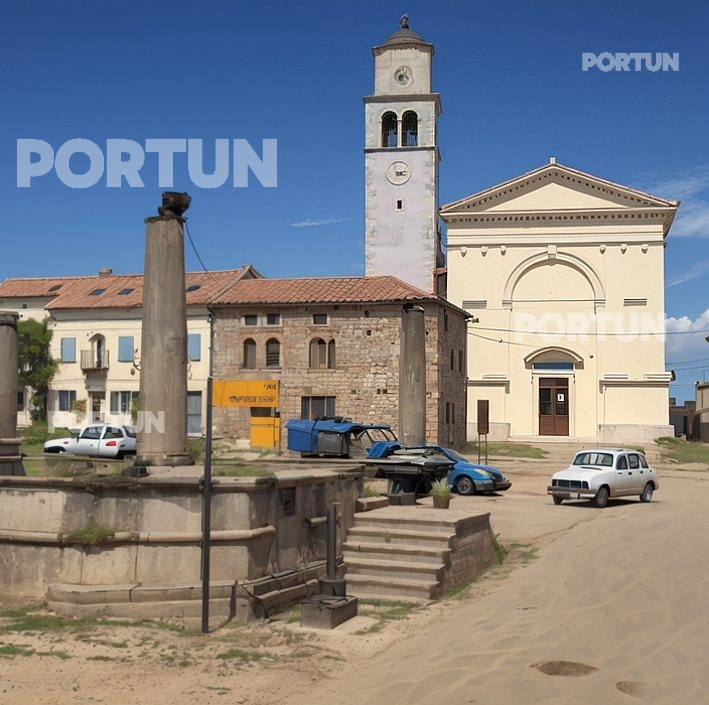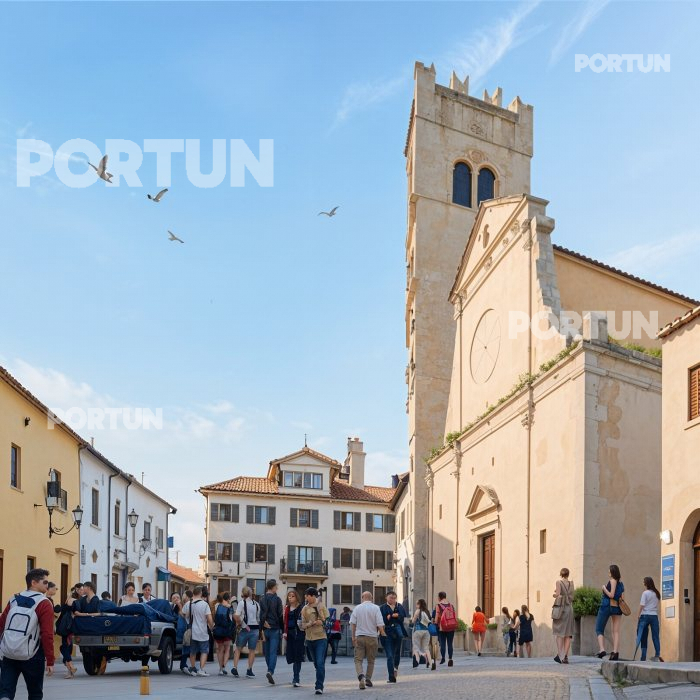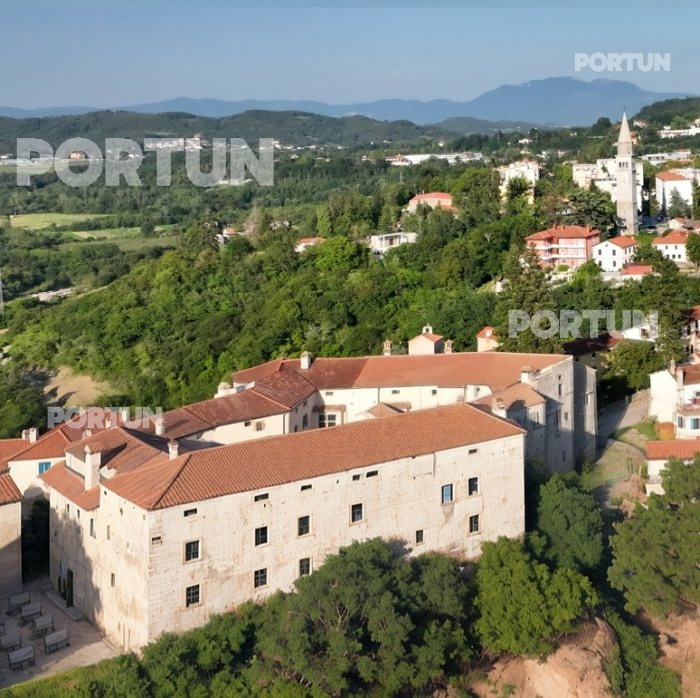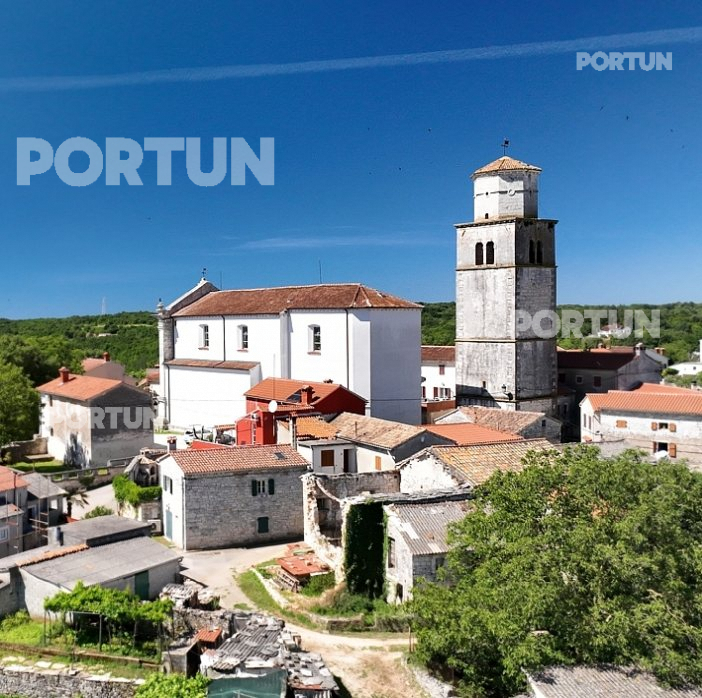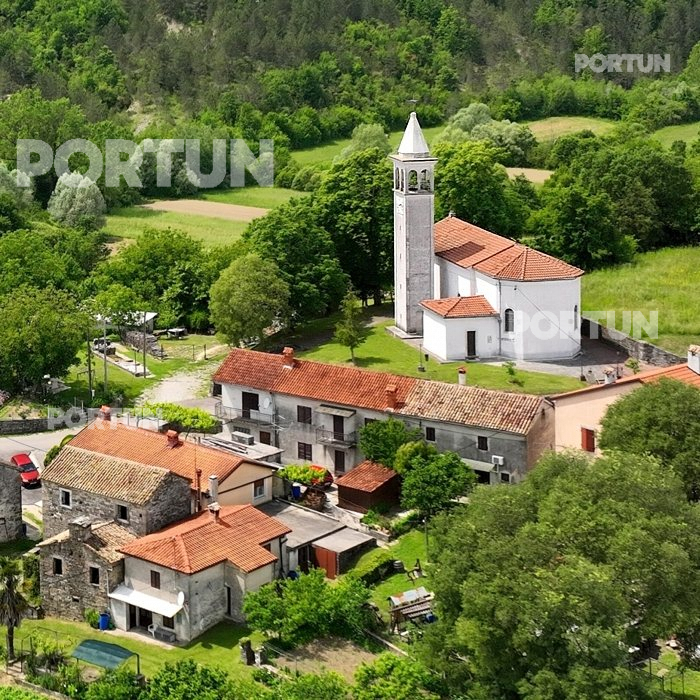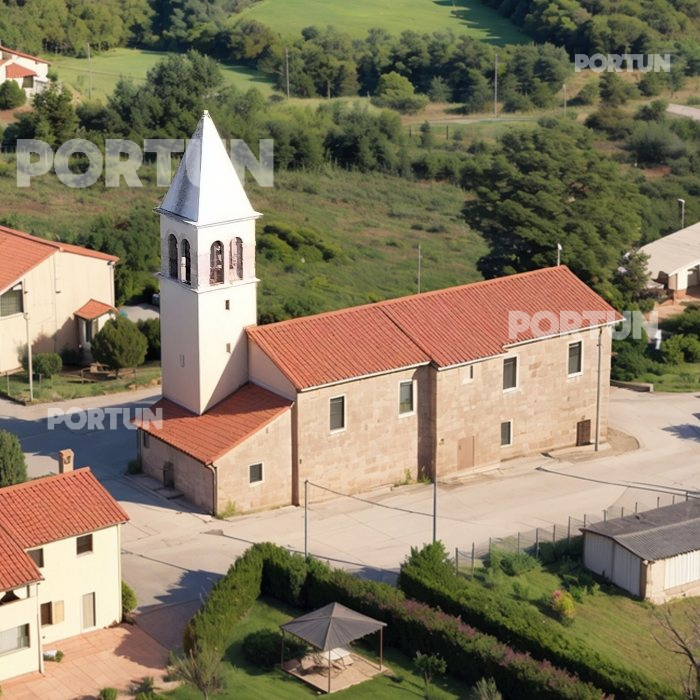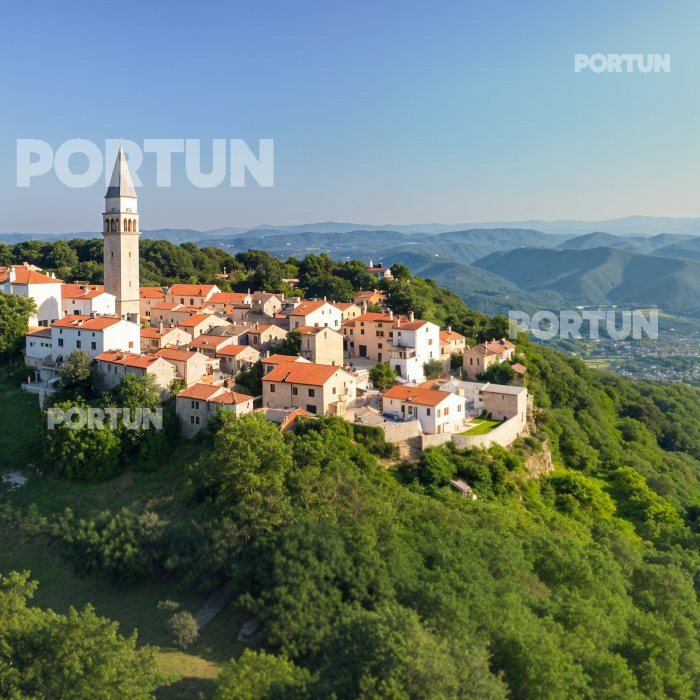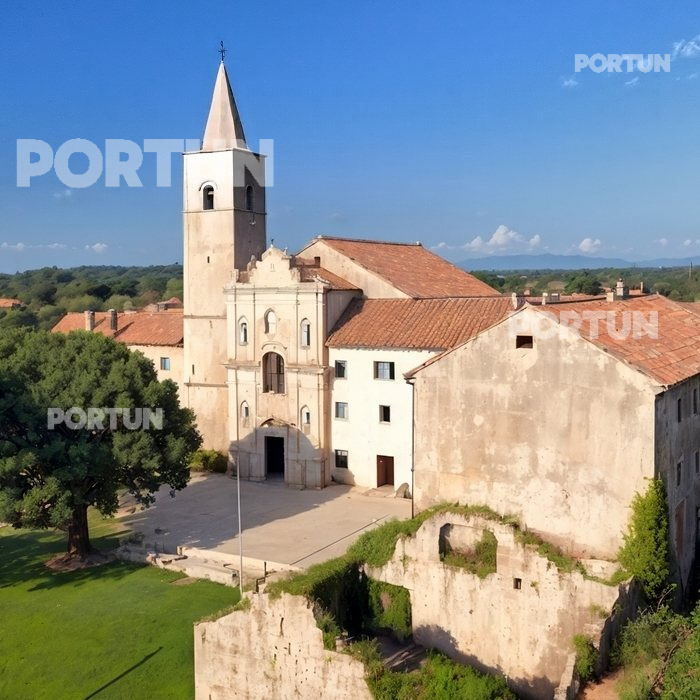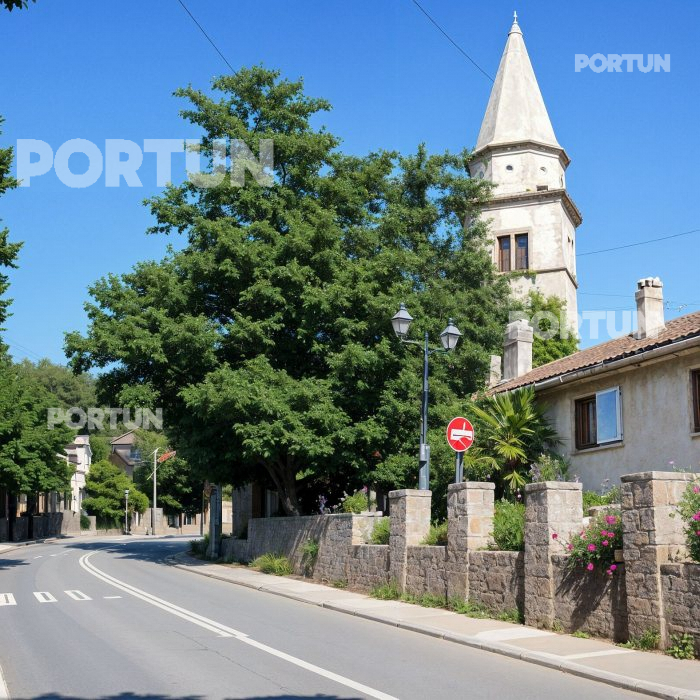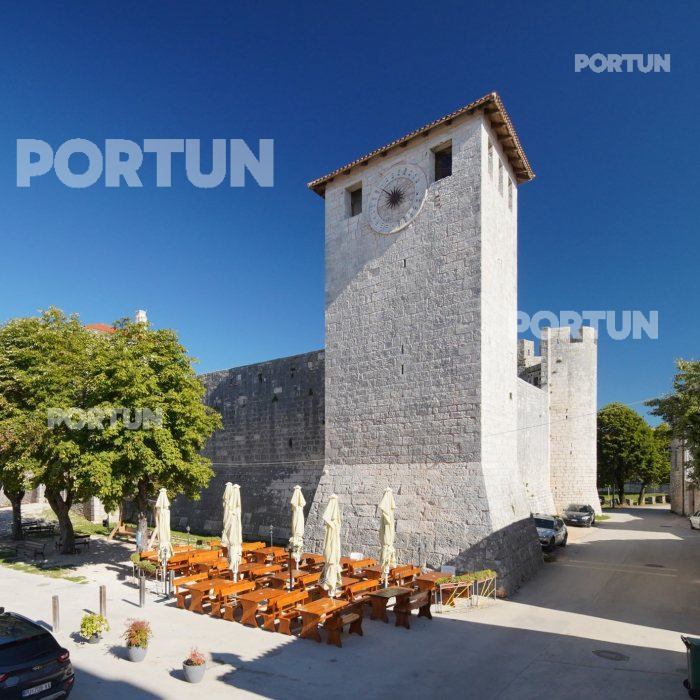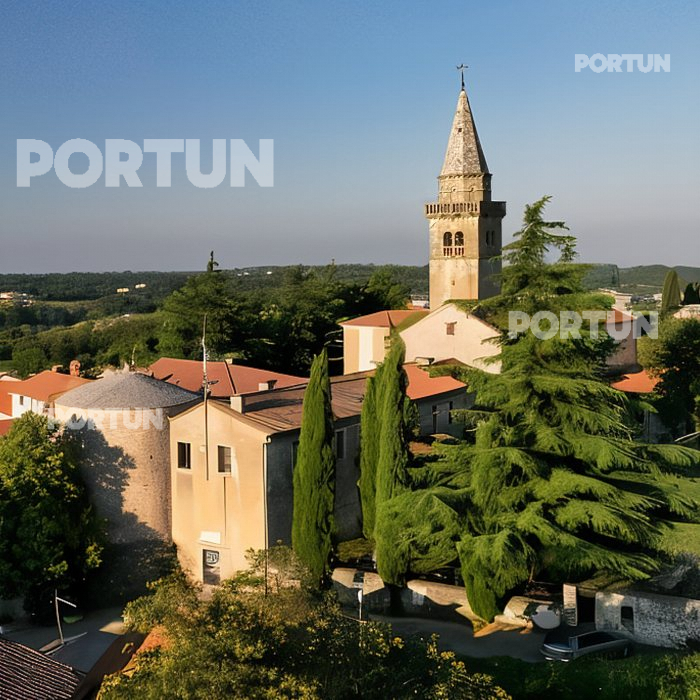Situated on a limestone plateau at 284 m above sea level, along the edge of Lim Valley and adjacent to the Pula–Ljubljana railway line, Kanfanar serves as a significant transportation hub, historically due to the railway and presently due to the construction of the Istrian Ypsilon highway. Its significance is further highlighted by the Lim Valley, stretching as a deep incision from Pazin Cave in the north to Lim Bay in the west, connecting the coastal and inland areas of Istria.
Archaeological findings bear witness to early habitation, with the cave of St. Romuald, located in the Lim Valley, standing out. It is believed that St. Romuald resided here for a period, using the cave as his abode while dedicating himself to the hermitic life following the construction of the monastery in Kloštar.
Kanfanar is the center of an area once dominated by the early medieval town of Dvigrad, situated in the immediate vicinity of Lim Valley. First mentioned in 879 AD, Dvigrad remains a witness to the rich history of the Istrian Peninsula, tracing its roots back to prehistoric times, with its name suggesting the presence of two towns in the area. Today, its ruins bear witness to tumultuous historical events, including conflicts between Venice and Austria and outbreaks of the plague. The legend of the hidden treasure of Henry Morgan adds a mystical charm to the area, suggesting that the famous pirate may have found refuge near Dvigrad, leaving a mark on local mythology.
The municipality of Kanfanar, situated in the heart of Istria, enchants visitors with its rich cultural heritage and picturesque nature. It is known for the festival of Istrian oxen - "boškarin", held every last Saturday in July, as well as for the "fuži" pasta festival, dedicated to Istrian pasta.
Real Estate Market in Kanfanar – Opportunities in the Heart of Istria
Why buy property in Kanfanar?
Located in the picturesque central Istria, Kanfanar is becoming an increasingly attractive location for buyers seeking a
peaceful place to live or
investment in tourism. Its excellent road connections with both the coast and inland, as well as its proximity to Rovinj, make it a desirable choice. The nearness of popular destinations such as
Rovinj,
Vrsar, and
Bale adds extra value to the area. By purchasing
real estate in Kanfanar, you gain a combination of authentic Istrian ambiance and more affordable prices compared to more well-known tourist towns.
Real estate offer in Kanfanar – what can you buy?
The Kanfanar area offers a diverse selection, from
older stone houses and
renovated villas to
new constructions and
building plots. Many investors recognize the potential of this region due to its cultural and natural value. Our current offer of
real estate in Kanfanar includes charming homes with views of vineyards as well as apartments that can be used for personal needs or as tourist accommodation.
Houses for sale in Kanfanar – what’s available?
The
houses for sale in Kanfanar market includes a variety of options – from traditional stone houses in the historic center to luxury villas with pools.
Houses for renovation can be a great investment for those who want to design the space themselves, while newly built villas are ready for moving in or rental. The proximity to
Sveti Lovreč and
Tinjan further increases the value of houses in this area, especially for those seeking a peaceful setting with easy access to amenities.
Apartments for sale in idyllic Kanfanar – what’s on offer?
The range of
apartments for sale in Kanfanar is becoming more varied. Buyers can choose between
compact apartments ideal for holidays and
larger residential units suitable for year-round living. With the growing interest in rural tourism, many new developments include modern apartments with views of nature. Kanfanar is also attractive to those seeking an alternative to apartments in
Žminj or
Sveti Petar u Šumi.
Land plots – building and investment opportunities
For those looking to build according to their own vision,
land plots in Kanfanar offer many possibilities. There are
building plots ideal for constructing a family home or a holiday villa. Thanks to affordable prices and the proximity to tourist zones, land here represents an
excellent opportunity for investors. Furthermore, the closeness to municipalities like
Bale,
Žminj, and
Sveti Lovreč adds value for business expansion or developing tourist facilities.
More affordable prices compared to well-known destinations
One of Kanfanar’s greatest advantages is its
competitive real estate prices. Compared to Rovinj or Vrsar, where prices have reached their peak, Kanfanar still offers great value for money. This
price difference attracts buyers who want more space, a garden, or a pool at a more reasonable cost. For those looking to get more for their money – Kanfanar is a smart choice.












